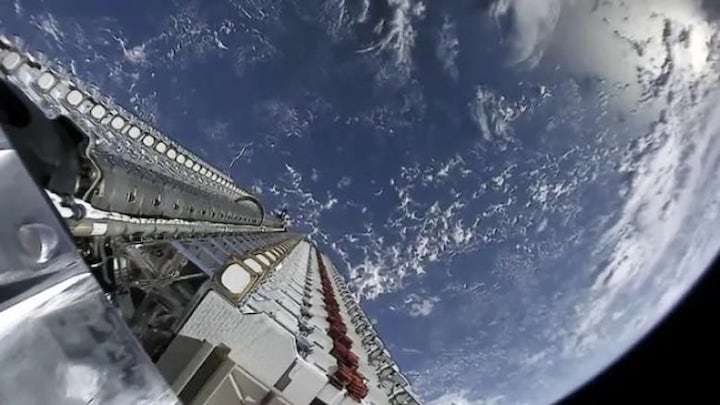24.05.2021

A new report by two Canadian researchers is highlighting the growing hazard of space debris. It warns that the new mega-constellations of tens of thousands of communication satellites could pose a new kind of danger that could ultimately threaten other satellites, astronauts, our ability to use space and could even have an impact on the climate.
Recently, the uncontrolled fall from space of a large Chinese rocket booster gained worldwide attention as no one could predict where it would come crashing to Earth. Fortunately, it came down in the Indian Ocean and no one was injured. That was just one booster.
But the amount of stuff — satellites, discarded boosters and other debris in Earth orbit — is huge. And this new report warns that with projects like the SpaceX Starlink satellite constellation, the issue of space debris could approach a critical turning point.
I spoke with Astronomer Aaron Boley from the University of British Columbia, who co-wrote the new study with legal scholar Michael Byers.
He told me: "Right now, Starlink has full approval within the current legal system to go ahead and launch 12,000 satellites, and they want to put up 30,000 more, so there will be 42,000 satellites. With Starlink alone, there will be more satellites in the sky than there are naked eye visible stars."
And that's not all. Others have similar plans, including OneWeb, Amazon, Telesat, and GW, which is a Chinese state-owned company.
This astounding number of satellites will outnumber the total number of objects orbiting the Earth today and form shells around the planet in low Earth orbit up to about 750 km altitude.
One problem with these enormous constellations is the visual pollution they can cause in the night sky. You might have even seen them — strings of these fast-moving satellites can be seen under the right conditions.

Astronomers are not happy about this, and some groups have called for legal action to stop Starlink and its competitors. The scientists would prefer to look at the real constellations rather than a constellation of satellites that can pass through a telescope's frame of view, ruining photographs of the cosmos.
But Aaron Boley has highlighted what could be a bigger issue. The more objects placed in orbit, the greater the chance of collision between them, other working satellites, astronauts working in space, and people on the ground when the objects fall out of orbit.
The new satellites launched by SpaceX and other companies are not just thrown up willy-nilly. They're placed in careful orbits meant to minimize risks of collision, and modern satellites are designed to be de-orbited when they die, not just abandoned as space junk. The commercial space companies must have plans to do this in an organized and safe way. This is all good and responsible.
But what Boley is concerned about is the possibility and implications of accidents. Random pieces of untracked space debris, or even meteors, could disable these satellites, disrupting their careful orbits and the deorbiting plans. The sheer number of these new satellites increases the risk.

And this could lead to a runaway disaster. Relative speeds are so fast in space that objects running into each other tend to be blown to bits, and those bits add to the problem. With every collision, more debris is added, increasing the risk even more in what could become a runaway cascade of collisions that could make the valuable real estate of low Earth orbit incredibly dangerous.
Another possible unintended consequence of these satellite constellation raised by Boley and Byers is that even without accidents, as these thousands of satellites age out and are deorbited, this rain of dead satellites could have an impact on the climate.
When an object from space is incinerated, it doesn't disappear completely. Satellites are made mostly of aluminum and that material remains at high altitude for a period of time. High altitude particles of aluminum have been proposed as one of the strategies for geoengineering, in which particles reflect sunlight back to space and cool the climate.

There is already opposition to the idea of doing geoengineering intentionally. Falling satellites might trigger an uncontrolled experiment with the Earth's atmosphere.
Boley told me, "The development of space is outpacing our capacity to understand what type of regulatory mechanisms are needed to ensure that it is done safely and sustainably."
"We need to move forward with regulations before the constellations are fully built rather than dealing with it after the fact. We need to move beyond thinking satellite by satellite and think about how we regulate internationally, entire systems of satellites."
Let's hope it doesn't come to the point where one day we may have to change the children's song to, "Twinkle twinkle little Starlink…."
Quelle: CBC/Radio-Canada
